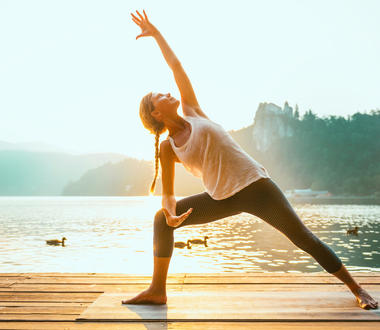Part II
3 Min read
In this blog I continue with short reviews of different yoga styles. They intend to serve as your navigational tool for the current yoga landscape.
In Part I we defined what Hatha Yoga is and discussed classical roots of modern yoga such as Ashtanga and Iyengar styles. This time you are invited to take a look at two more classical traditions: Kundalini and Sivananda Yoga.

Kundalini Yoga = it is all about energy
It is a common belief in yoga and other eastern traditions that each of us has seven chakras along the spine. Chakras might be understood as invisible “organs” that serve as centers for the circulation of energy. Almost every yoga style more or less references life energy and chakras. However, Kundalini yoga is all about the handling of energy in the body. In this yoga tradition, all mental, physical and breath exercises are intended to push the energy (Kundalini) from the lowest chakra, Muladhara, to the highest one, Sahasrara. It is called “to wake up Kundalini”, which is believed to sleep in the lowest Chakra in the base of the spine.
A so-called non-dualistic view serves as the philosophical base of Kundalini yoga. Here it is believed that a personal soul (Atman) has to re-unite with the cosmic one (Brahman). If I allow myself to describe the conditions of such reunion in the simplest words, it happens as the Kundalini energy reaches the highest chakra. Atman and Brahman are seen as essentially one nature, that is why this philosophical view is called non-dualistic (not two natures, but one). So, if you wish to broaden your sensitivity to energies, I guess Kundalini would be an interesting journey in your life.
But look for the appropriate school and teachers. If you would love to unite with the cosmic spirit be prepared to find a couple of really weird offers on your way. (Currently I plan a blog to elaborate on this vitally important topic and describe the signs of trustable yoga and meditation teachers, so stay tuned.

Sivananda Yoga – yoga for each facet of life
Sivananda yoga is one more classic style of yoga, named after its founder Swami Sivananda Saraswati (1887 – 1963). He was a medical professional, who, after a long practice of yoga, established the house for intensive yoga studies (Ashram).His approach to studies included a synthesis of yoga practices:
- exercise of postures’ sequence (Hatha Yoga)
- ethical rules and mental practices (Raja Yoga)
- study of yoga related texts (Jnana Yoga)
- selfless service (Karma Yoga)
- devotional rituals and chanting (Bhakti Yoga)
The classic exercise sequence in Sivananda tradition includes 12 postures (asanas). Today, Sivananda Yoga is widely spread in Europe and taught in several centers, among them the biggest European Ashram – Yoga Vidya. Here you might dive into the pace of ashram life and study all the above listed practices in a safe place. If you are open-minded enough for the mix of esotery and Indian culture in the walls of an urban sanatorium, it is worth trying.
Coming soon
In my next blogs, I will represent short reviews of modern yoga styles: relative newborns, developed mainly by Westerners. Don‘t get caught with the idea that pure and real yoga knowledge is gained only in India. Some of the modern yoga styles are real treasures stuffed with great ideas, revised philosophy and new findings in posture practice. And of course, enjoy yoga, whatever your choice is!




